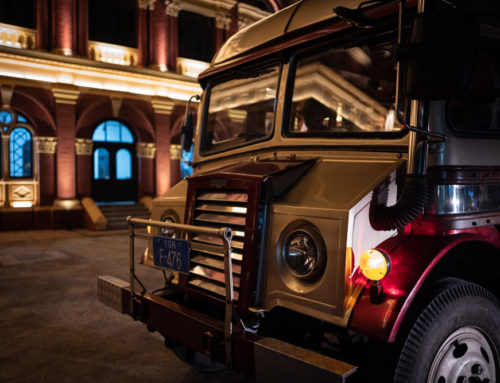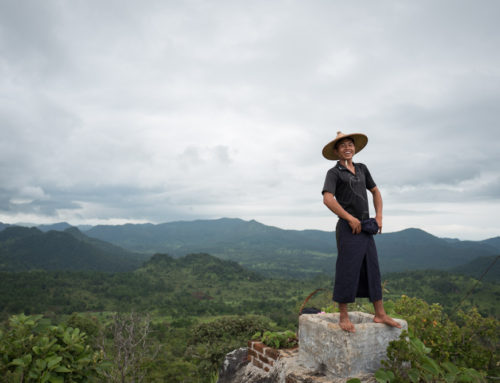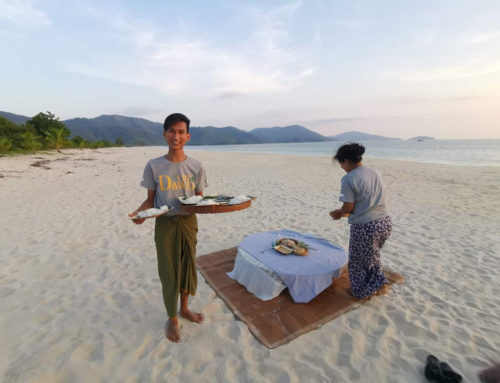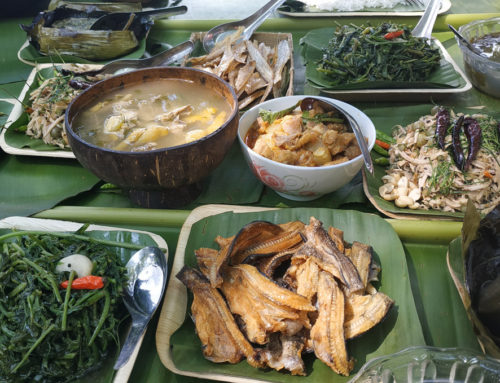THE SECRETARIAT

![]() OVERVIEW
OVERVIEW
Yangon’s Secretariat, also known as the Ministers’ Building, was the home and former administrative capital of British Burma. Occupying a whole block, its formidable size and undeniable majestic beauty were surely a sign that the British were here to stay, or so they thought. General Aung San (Daw Aung San Suu Kyi’s father) and his Thirty Comrades effectively put an end to that when they sided with the Japanese midway through World War II. The independence hero’s success was short lived however; four assassins broke into the Secretariat on 19th July 1947, brutally gunning down General Aung San and eight other individuals in their wake. This then set off a chain of events, which the country’s still yet to recover from to this day. The Secretariat is a symbol of what was, what is and what’s yet to come; whilst exploring the compound on this shared public tour, we’ll get the opportunity to discuss this and much, much more.
![]() PACE
PACE
Easy going
![]() TOUR PERIOD
TOUR PERIOD
One to two hours
![]() HIGHLIGHTS
HIGHLIGHTS
- Step inside the Secretariat, an important heritage building that’s long been off limits to tourists.
Gain access to the Parliament House, a building in which General Aung San would have regularly engaged in political debate. - Follow in the footsteps of the four assassins who broke into the building and took General Aung San’s life, along with six cabinet members, a cabinet secretary and bodyguard.
- Stop to talk politics at a tea shop located opposite Ghandi Hall, a building that was purchased by Prime Minister U Nu in 1951.
![]()
ITINERARY IN DETAIL
(Click to read)
This morning you’ll be collected from your hotel and driven to the majestic Secretariat Building in time for a 09:30 shared tour. Sometime referred to as the Ministers’ Building, Myanmar’s grandest colonial relic was the home and administrative seat of British Burma. Nowadays, it is perhaps remembered less for that and more for General Aung San, his six cabinet members, a cabinet secretary and a bodyguard; on 19th July 1947 a gang of armed men burst into the building and assassinated them during a meeting of the Executive Council. Once inside, we’ll learn more about the reasons behind the targeted assassination, whilst taking time to explore the gutted interior of a colonial gem that’s long been off limits to the general public.
Other than being Aung San Suu Kyi’s father, General “Bogyoke” Aung San is still revered to this day for bringing about the country’s independence. This was agreed by General Aung San and British Prime Minister Clement Attlee on 27th January 1947, although it wasn’t until the 4th January 1948 (after General Aung San’s assassination) that permission was officially granted.
In line with the dictates of astrology, the Union Jack and Union of Burma flags were interchanged at exactly 04:20 in front of Parliament House, a single storey building, which can be found in the centre of the Secretariat compound. Winston Churchill had publicly labelled General Aung San, “a traitor rebel leader” for temporarily siding with the Japanese, so it was lucky for Myanmar that the sharp-tongued Conservative leader wasn’t elected for a second consecutive term; if he had been, it’s likely Myanmar’s independence wouldn’t have happened until much later.
Even though evidence clearly indicated that U Saw, a leading politician and Prime Minister of British Burma, was the ringleader of General Aung San’s assassination, many people believe he had support from the British.
Reason one: The British were still angry at him for double crossing them with the Japanese during the Second World War; it was this that ultimately led to them losing control. Even though the allied forces reoccupied the country in 1945, the Burma Campaign had ravaged Burma and it would inevitably take a lot of time and money to repair (not ideal after one of the costliest wars in human history). Having lost what would have been an excellent trading route between India, China and Thailand, it’s no wonder why people like Winston Churchill (whose father Randolph, ordered the Third Anglo-Burmese War for exactly that reason) were bitter.
Reason two: General Aung San came close to uniting the country, which was a miracle considering all of the colonially created divisions; the Kachin and Kayin for example fought loyally alongside the allied forces, and without their support, it would have been a lot more difficult for the British to exert influence.
Reason three: Aung San was also the founding member and first Secretary General of the Communist Party of Burma (CPB) and there were fears that he might look to reunite. At the time, communism was seen as a huge threat to Western Ideals, so that wouldn’t have helped his case either.
There are plenty more possibilities out there, but we’ll leave you to discuss these with your guide. One thing’s for sure, nothing’s black and white and you can’t help but wonder what Myanmar would be like today if the 32-year-old’s life had been spared. Would General Ne Win have staged a coup d’etat in 1962? Would there have been genuine unification? What would have happened to Aung San Suu Kyi; would she have still chosen to get involved with politics? As the founder of the Tatmadaw, what role would the military have played in General Aung San’s government?
Having followed the assassins’ trail through the Secretariat, from the stairs they rushed up, to the room in which General Aung San fell, we’ll take a short drive to a cosy tea shop located across the road from Mahatma Gandhi Hall. Interestingly, the building in which the tea shop is located (501 Merchant Street), was restored by Turquoise Mountain back in 2016, a foundation supported by HRH the Prince of Wales. Remarkably, they did this without having to evict any of the existing residents or commercial businesses. Furthermore, over 250 people were trained in traditional building techniques, which will be sure to benefit Yangon’s wider community for a long time to come.
Mahatma Gandhi Hall was first used as the office for the Myanmar Times, the country’s most popular English newspaper, until it was bought by Prime Minister U Nu and the Indian Ambassador in 1951. Although Gandhi never visited the building, it was named in his memory after he too was assassinated on 30th January 1948.
Before continuing with the next part of your tour, feel free to sit down with your guide and talk about Myanmar politics over a cup of tea; even during the days of strict censorship, this has long been a popular past time for the city’s residents.
![]()
INCLUSIONS
- Transportation to/from hotel in an air-conditioned vehicle
- Secretariat entrance fee
- Tea in a tea shop (other drinks will need to be purchased separately)
- English speaking tour guide (for other languages, please enquire)
- Drinking water and hand towel
![]()
EXCLUSIONS
- Anything not mentioned
![]() NOTES
NOTES
- This is a shared tour and it is likely you will be accompanied by other paying members of the public.
- The proposed itinerary assumes that you will join the 09:30 tour, however, alternate times are also available. Monday – Friday: 09:30, 11:30, 13:30 and 15:30. Saturday: 09:30 only.
- The Secretariat is not open on Sundays.
- The duration of the tour lasts for approximately one hour.
- Should you wish to visit the featured local teashop at the end, the cost of tea is included only – other beverages will need to be purchased separately.
![]() PRINT
PRINT
![]() LOCATION
LOCATION






